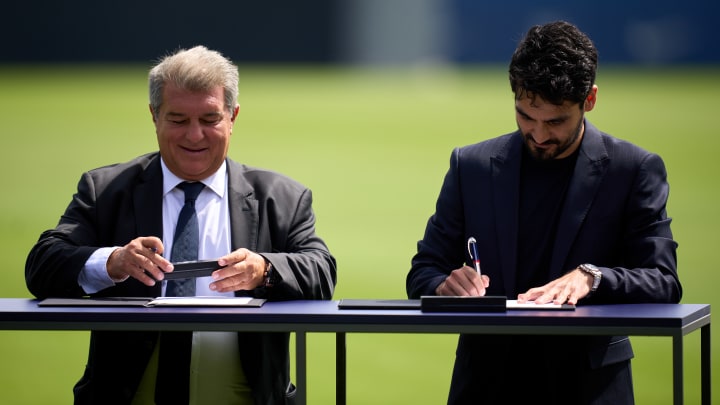What is a release clause?
- Contracts have become more and more complicated in modern football
- A huge number of players have release clauses in their deals
- There are some astronomical release clauses at La Liga's top clubs

Transfers have almost become a sport of their own within modern football.
With every transfer window comes the winners and the losers, the coups and the flops. The fanfare and the money spent is exponentially rising with each passing season and good recruitment and negotiation skills are essential to on-field success.
Contracts have also become more complicated, with more intricate bonuses and significantly steeper wages. However, one thing that remains fairly simple is the concept of the release clause.
Let's take a closer look at what release clauses are and how they are activated.
What is a release clause?
Release clauses are fairly straightforward to understand. It's simply a set fee placed in a player's contract which when activated allows a club to sign said player for that exact amount. Instead of negotiating a price with the selling team, a club can simply trigger the release clause and pay the exact amount already agreed in the player's contract.
For example, if a player has a £25m release clause in their contract when signing with Club A, then Club B can simply offer £25m and Club A must accept that offer. Of course, the player could turn down a move once the release clause is triggered.
Release clauses don't end the negotiation process, though. Clubs can still negotiate how to pay said clause, potentially sorting a deal which allows them to pay the fee over multiple instalments.
Why do players have release clauses?
There are multiple reasons why a player might have a release clause in their contract and they are now standard protocol in deals between player and club.
One key reason may simply be to protect a player's value. For example, a large release clause inserted into a player's deal may dissuade other clubs from buying them, allowing a club to retain their brightest talents.
On the other hand, a release clause can also benefit the player. Should a young talent join a mid-table Serie A club, for example, the player and their agent may ensure that their is an achievable release clause in their deal to enable them to progress to a bigger club without any issues. Release clauses can often allow smaller clubs to sign more promising stars as it allows the player a simple exit route.
Release clauses can also become active at different points in a player's contract. Say a player joins a club during the 2024/25 summer transfer window, the release clause in their deal may only become active in 2026. That ensures that the player has the ability to move to a bigger side in the near future, but also allows the club to keep a hold of their asset for at least two years.
Does every contract have a release clause?
Release clauses are by no means mandatory. In fact, many clubs will refuse to insert release clauses into the contracts of their players, offering them greater flexibility to respond to a player's value and interest in the market.
However, they are increasingly common and there are some sides that have release clauses in all of their players' contracts. In La Liga, for example, release clauses are actually compulsory.
The biggest release clauses in football
Some release clauses are astronomical. In essence, they are only inserted into a player's contract in order to keep them at the club for the entirety of their deal, or until the club deems them surplus to requirements.
These eye-watering clauses are particularly prominent in La Liga due to them being mandatory, especially at Real Madrid and Barcelona. In fact, there are at least nine players at these two Spanish giants who boast €1bn (yes, billion) release clauses, including Jude Bellingham, Vinicius Junior, Lamine Yamal and Pedri. That works out at £860m.
In the Premier League, it's believed Kevin De Bruyne has the largest release clause, sitting at £213m. His Manchester City teammate Erling Haaland is not far behind with a £175m release clause.
READ THE LATEST TRANSFER NEWS & GOSSIP FROM AROUND THE WORLD
feed